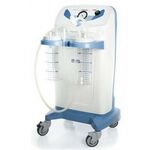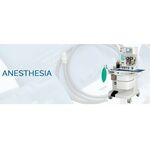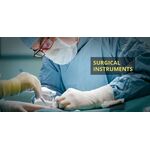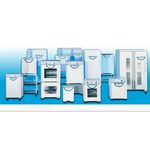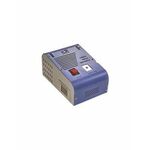OT Equipment
Description of OT Equipment:
Operation Theater equipment is crucial for any medical institution. The equipment of an operation theatre must be designed to be durable, easy to maintain, and efficient. The equipment must also ensure that the surgeon has access to the necessary tools and instruments to perform surgeries successfully.
Types of OT Equipment:
- Operating Table: An operating table is the foundation of the operation theatre. It must be strong, durable, and capable of supporting a patient's weight during surgery. The table must be adjustable to different positions to facilitate surgeries that require different angles. Most modern operating tables come with built-in imaging equipment, making them ideal for minimally invasive surgeries.
- Anesthesia Machine: An anesthesia machine is used to administer anesthetic gases and oxygen during surgery. The machine ensures that the patient remains unconscious during the procedure, and their vital signs remain stable. The machine must be easy to use, with controls that are easily accessible to the anesthetist.
- Surgical Lights: Surgical lights are used to illuminate the surgical field. The lights must be bright enough to illuminate the area without casting shadows or causing glare. Modern surgical lights come with adjustable brightness and color temperature settings, making them suitable for different surgical procedures.
- Electrosurgical Units: Electrosurgical units are used to cut and coagulate tissue during surgery. The units must be precise, with settings that can be adjusted depending on the type of surgery being performed. Most modern electrosurgical units come with a range of electrodes, allowing surgeons to choose the right tool for the job.
- Operating Microscope: An operating microscope is used during intricate surgeries, such as neurosurgery or eye surgery. The microscope provides a magnified view of the surgical site, allowing the surgeon to operate with precision. The microscope must be easy to maneuver and provide clear, sharp images.
- Surgical Instruments: Surgical instruments are the tools that the surgeon uses to operate on the patient. The instruments must be of high quality, easy to sterilize, and durable. Common surgical instruments include scalpels, forceps, scissors, retractors, and clamps.
Use of OT Equipment:
The use of OT equipment is critical in ensuring that surgical procedures are conducted safely and effectively. The following are some of the most common uses of OT equipment:
- Operating Table: An operating table is used to position the patient during surgery. The table must be sturdy and capable of supporting the patient's weight without collapsing. The table can be adjusted to different angles and positions to ensure that the surgeon has access to the surgical site.
- Anesthesia Machine: An anesthesia machine is used to administer anesthetic gases and oxygen to the patient during surgery. The machine is responsible for keeping the patient unconscious and ensuring that their vital signs remain stable. The machine can be adjusted to deliver the correct amount of anesthesia depending on the patient's weight and medical history.
- Surgical Lights: Surgical lights are used to illuminate the surgical field. The lights must be bright enough to provide adequate illumination without casting shadows or causing glare. Proper lighting is essential for the surgeon to see the surgical site clearly.
- Electrosurgical Units: Electrosurgical units are used to cut and coagulate tissue during surgery. The units use an electrical current to cut and seal blood vessels, reducing the amount of bleeding during the procedure. The units are particularly useful for surgeries that involve removing tumors or cauterizing tissue.
- Operating Microscope: An operating microscope is used during intricate surgeries, such as neurosurgery or eye surgery. The microscope provides a magnified view of the surgical site, allowing the surgeon to operate with precision. The microscope can be adjusted to provide the right level of magnification for the procedure being performed.
- Surgical Instruments: Surgical instruments are the tools that the surgeon uses to operate on the patient. The instruments must be of high quality, easy to sterilize, and durable. Common surgical instruments include scalpels, forceps, scissors, retractors, and clamps.
Benefits of OT Equipment:
There are numerous benefits of OT equipment, including:
- Improved Patient Outcomes: The use of high-quality OT equipment can improve patient outcomes by enabling surgeons to perform procedures more safely and effectively. Properly functioning equipment can reduce the risk of complications during surgery, improve accuracy, and speed up recovery times.
- Increased Efficiency: The use of OT equipment can help to increase efficiency in the operating room. For example, the use of electrosurgical units can reduce the amount of time needed to cut and seal tissue, while the use of surgical instruments can make procedures faster and more precise.
- Reduced Risk of Infection: Sterilization is a critical part of using OT equipment, and properly sterilized equipment can reduce the risk of infections during surgery. High-quality equipment is typically made of materials that are easy to sterilize and maintain.
- Improved Safety: Safety is a key consideration in the use of OT equipment. Many types of OT equipment, such as operating tables, anesthesia machines, and electrosurgical units, have safety features built in to help reduce the risk of harm to the patient.
- Increased Comfort: The use of OT equipment can help to increase patient comfort during surgery. For example, adjustable operating tables can be positioned to reduce strain on the patient's body, while anesthesia machines can be adjusted to provide the right level of anesthesia for each patient.
- Better Ergonomics: The design of OT equipment is typically optimized for ease of use and ergonomics. This can help to reduce the risk of injury to surgeons and other healthcare workers, as well as improve efficiency and reduce fatigue.
- Cost Savings: Although high-quality OT equipment can be expensive, it can also lead to cost savings in the long run. For example, the use of electrosurgical units can reduce the need for other surgical tools and reduce the amount of time needed for surgery, leading to lower costs.

